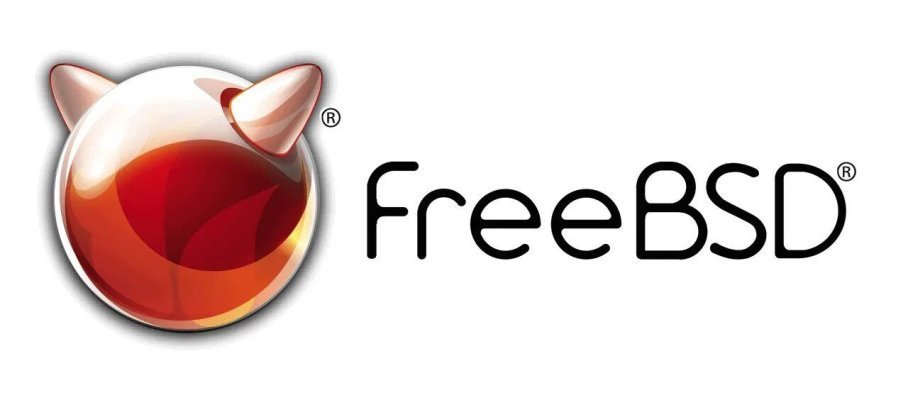The world of operating systems is rich and varied, but among them BSD systems, characterized by high stability, security and flexibility, occupy a special place. FreeBSD, OpenBSD, and NetBSD are three of the best known members of this family, each with unique features and target audiences. Let's take a closer look at each of them and compare their features.
FreeBSD: A workhorse with a lot of features
FreeBSD is probably the most popular of the three systems. Its key advantage is its balance between stability, performance, and a rich feature set.
- Portability: It supports a wide range of architectures, including x86, ARM, AArch64, RISC-V, and others, making it ideal for use on a wide variety of devices, from servers to embedded systems.
- Stability and reliability: It is deservedly considered one of the most stable operating systems. Its reliability in networking applications is particularly notable, making it a popular choice for building servers and network infrastructure. FreeBSD makes extensive use of the TCP/IP stack, which has been tested over the years.
- Virtualization Jails: The built-in Jails technology allows you to create isolated virtual environments, providing security and efficient resource management. This is a great solution for hosting multiple websites or applications on a single server.
- Ports Collection: the Ports Collection package manager provides access to a huge amount of software that can be easily installed and upgraded. The Ports system is characterized by its simplicity and flexibility in managing dependencies
- ZFS file system: Support for ZFS, a powerful file system that provides data integrity checking, quality compression and quick snapshots, is a significant advantage. ZFS provides high reliability and protection against data loss.
- Security: FreeBSD pays great attention to security, with regular updates to address vulnerabilities. An active community facilitates rapid response to new threats.
OpenBSD: Security First

OpenBSD is an operating system for which security is the number one priority. Its developers pay great attention to code and kernel security, making it an attractive choice for systems where security is critical.
- Focus on security: OpenBSD is known for its rigorous approach to security, regular code audits, and active vulnerability mitigation. Many developers of other operating systems use OpenBSD as an example of security best practice.
- Integrated Cryptography: Cryptographic functions are deeply integrated into the system, making it easy to use secure connections and encrypt data.
- Standardization: OpenBSD adheres to strict coding and development standards, which helps improve code quality and security.
- Active community: Despite having fewer users than FreeBSD, the OpenBSD community is very active and responsive.
NetBSD: versatility and portability

NetBSD is the most portable of the three systems. It can be run on a huge number of architectures and platforms, from embedded devices to powerful servers.
- Maximum portability: this is its calling card. NetBSD runs on a wide range of processors and hardware platforms, making it unique.
- Cross-platform compatibility: packages built for NetBSD can often be easily ported to other Unix-like systems.
- Support for modern technologies: NetBSD supports ZFS, RAIDframes, and disk encryption, providing flexible and reliable storage.
- Support for a wide range of hardware: Includes support for both modern x86 and ARM architectures, making it attractive for embedded systems and servers. Support for Xen and NVMM virtualization extends the capabilities.
Package and service administration
Package and service administration differs on all three systems, but is generally command-line based. FreeBSD uses Ports Collection and pkg, OpenBSD uses pkgsrc, and NetBSD uses pkgsrc and a package manager based on `pkg_add`. Services are managed through systemd (on FreeBSD and some NetBSD builds) or each system's own mechanisms (often through initialization scripts). Detailed documentation is available for each system, making it easy to learn to administer.
Managing System Services in NetBSD and OpenBSD: A Practical Guide
Administering operating systems like NetBSD and OpenBSD often requires working with system services. Knowing how to manage these services is a key skill for any system administrator. In this article, we will look at how to install, start, stop, and manage services in NetBSD and OpenBSD, using the Apache case study, and discuss general principles of package management.
NetBSD: The rc(8) system and Apache management
In NetBSD, services are managed primarily through the `rc(8)` system, information about which is stored in the `/etc/rc.d/` directory. Let's look at installing and managing the Apache web server as an illustration.
Installing Apache
To install Apache, we use the `pkgin` package manager:
sudo pkgin install apacheStart, stop and restart
Once Apache is installed, you can manage it in several ways. Quick restart - the method is convenient for restarting the service immediately without editing configuration files.
sudo /etc/rc.d/httpd onerestartControl via `rc.conf`: A more flexible method that allows you to customize the service startup settings. Edit the `/etc/rc.conf` file:
sudo vim /etc/rc.confEnable Apache:
httpd=YESStandard commands can now be used:
sudo service httpd restart # Перезапуск
sudo service httpd stop # Остановка
sudo service httpd start # ЗапускChange port
To start Apache on a non-standard port (for example, 8080), add the `httpd_flags` parameter to `/etc/rc.conf`:
sudo vim /etc/rc.confAdd line:
httpd_flags='-I 8080'Save the changes and restart Apache.
OpenBSD: pkg_add and rcctl for service management
OpenBSD uses the `pkg_add package manager to install software and the `rc(8)` system to manage services. However, unlike NetBSD, it is recommended to manage services primarily through the `rcctl` utility, avoiding direct editing of `/etc/rc.conf`. This reduces the risk of conflicts during system upgrades.
Managing packages
Installing `sudo` (if necessary):
pkg_add sudoUpgrading the system:
sudo pkg_add -uInstalling a package:
sudo pkg_add <pkg_name>Uninstalling a package:
sudo pkg_delete <pkg_name>Basic package data:
pkg_info -Q <pkg_name> # Проверка, установлен ли пакет
pkg_info <pkg_name> # Информация об установленном пакетеManaging services (system daemons) via rcctl
Installing Apache (including necessary dependencies such as PHP):
sudo pkg_add php
sudo pkg_add php-apache
sudo pkg_add apache24 # Или другое название пакета apache в OpenBSDManaging Apache with `rcctl`:
sudo rcctl start apache24 # Запуск
sudo rcctl stop apache24 # Остановка
sudo rcctl restart apache24 # Перезапуск
sudo rcctl status apache24 # Проверка статусаInstead of editing `/etc/rc.conf`, `rcctl` allows flexible management of services without the risk of corrupting the configuration.
In conclusion, NetBSD and OpenBSD offer powerful and flexible customizations for interacting with system services. Understanding the principles of `rc(8)`, `pkgin` (NetBSD) and `pkg_add`, `rcctl` (OpenBSD) is the foundation for effective administration of these operating systems. The use of `rcctl` in OpenBSD is recommended to minimize risks during system upgrades.
